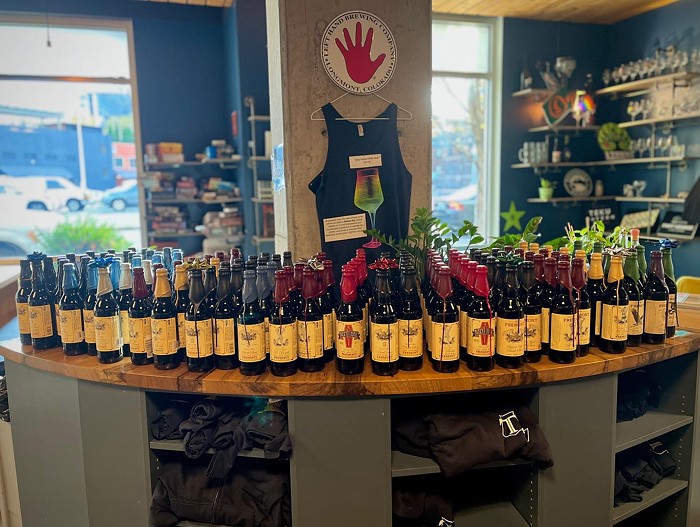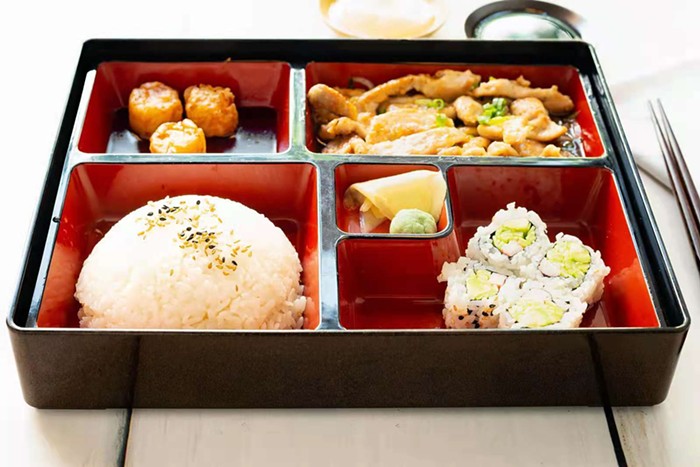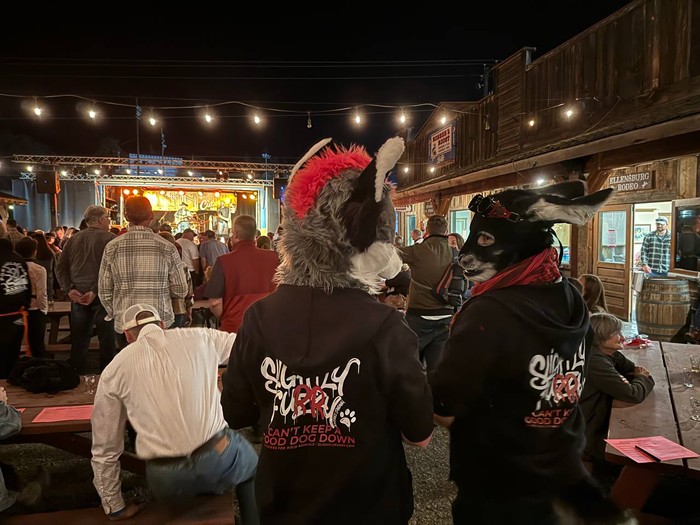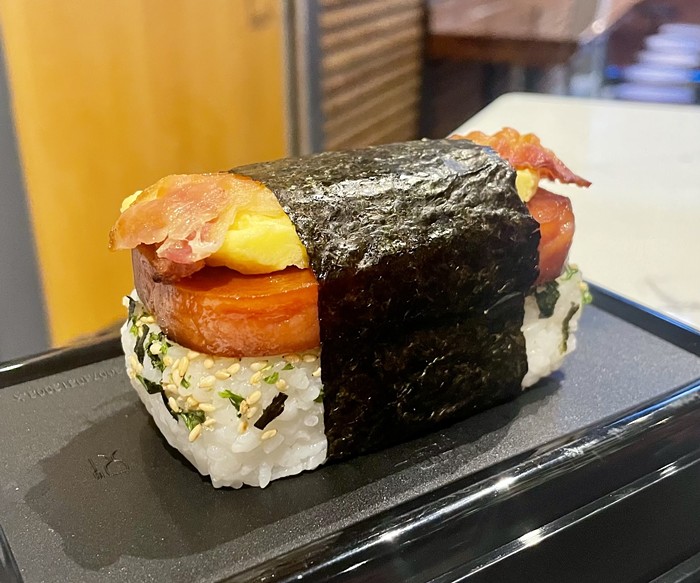The First thing that happens is seemingly unimportant, done without flair or attention or even consciousness, but it's really the most important event of the meal: Before taking our order, the slightly surly, overly casual, preoccupied waitress brings four innocuous plastic squeeze bottles to the table and quickly returns to the bar, where she's pouring shots of Makers Mark for the few regulars perched on stools. The plain plastic bottles are labeled with handwriting on strips of masking tape: Original, Spicy, Jezebel, and the Stuttering Redneck.
Bourbon and Barbecue's menu starts off with a dangerous reference to its culinary roots: The Cajun catchphrase "laissez les bons temps rouler" decorates the top of the page. I'm always wary of any restaurant that wears its cultural authenticity on its sleeve this way. But there aren't maps of Louisiana on the walls and "When the Saints Go Marching In" isn't blaring. There's good rock 'n' roll on the stereo, and bad but local art on the walls. The dining room feels casual and real, clean but not precious, functional and... authentic. Southern.
CIA-trained chef-owner Cortland Inge, in opening his first restaurant outside of his native Alabama, has created a menu that, at first glance, seems like a template downloaded from a how-to-start-a-basic-Southern-restaurant website. There are po' boy sandwiches, baskets of gulf shrimp, barbecued pulled pork, red beans and rice, collard greens, fried green tomatoes, fried catfish... if you've ever been south of the Pisgahs, or ever seen a film about the South, or maybe just an episode of In the Heat of the Night, you know this menu. But the subtlety of flavors and the aesthetic simplicity of almost everything we tried raises the cuisine to a far more interesting level.
The barbecue pulled pork ($9.75), served over red beans and rice, is a great example. Pulled pork is the set piece by which barbecue joints are traditionally judged—it's a seemingly simple dish that's enormously difficult to pull off. Typically made from a cheap and often tough "working" cut of muscle-ridden pork shoulder, not an easy cut of meat to prepare, the dish requires a potentially frustrating balance of patience and attention. Inge's pork is perfectly tender, never gristly, but still maintains its texture, stopping just shy of turning to mush in the pot. Ladled generously over the rice and beans, it's a fresh, straightforward plate, dry and reserved. The pork isn't cooked to dryness; I refer rather to the chef's restraint in saucing, his subtlety of spicing, his plainness.
It is here, in this anticlimactic moment of plainness, that the most important part of the evening comes back into the picture. Generally I shy away from sauces on the table in the same way that I shy away from saltshakers. I put myself trustingly into the hands of the chef, and I eat what he or she gives me. Self-saucing always seems like second-guessing the kitchen. But what becomes obvious throughout this meal, from the lightly breaded and fried artichoke hearts ($7.95) to the simply presented and barely dressed catfish po' boy ($9.75) and the completely unadorned collard greens ($2), is that Inge is creating a series of relatively neutral dishes on which he encourages you to explore his real masterpieces, sitting there in their plain plastic bottles: Original, Spicy, Jezebel, and the Stuttering Redneck.
Jezebel is a wanton hussy indeed. Her dominant flavors, sweet from apricots and hot from horseradish, stand in front of a backdrop of half a dozen other, subtler spices. The Stuttering Redneck is a smoldering, smoky rich blend, with just a hint of heat around the edges. The Original and the Spicy are both strong and confident but not overpowering. I spent the evening sampling, mixing, dipping, and drizzling these four sauces in myriad variations over everything on the table (mac 'n' cheese included). Each acted, as good sauces should, like a musical chord, with flavors harmonizing, but always in support of one or two dominant notes.
Chef Inge seems to be encouraging his patrons to take a more active role in the meal. With these sauces you participate in that last step of preparation before ingestion, starting a bit of a dialogue with the man behind the curtain. It's a dialogue I look forward to continuing. ![]()


















